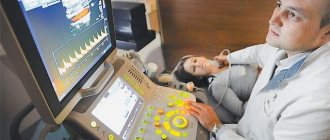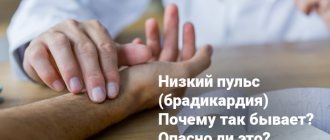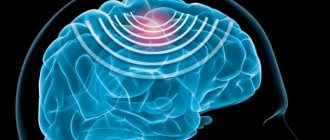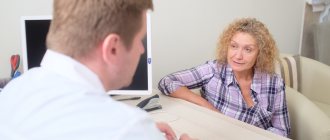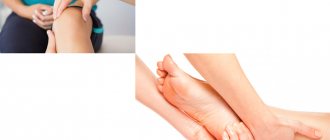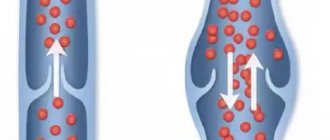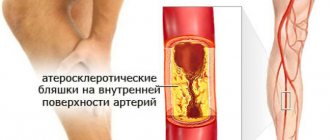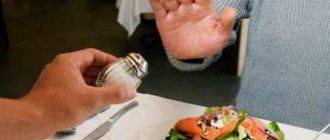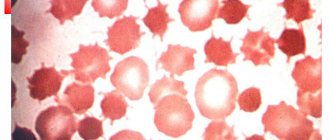At the moment, a set of exercises according to Shishonin is the most effective and safe method of therapy. It helps combat many neck problems, improves overall well-being and normalizes healthy sleep. Gymnastics are easy to do. However, before starting treatment, it is recommended to consult a doctor to exclude contraindications.
Why you should trust Doctor Shishonin
Alexander Yuryevich Shishonin is an internationally qualified doctor, therapist, cardiologist, and has a higher medical education. The doctor regularly attends advanced training courses and takes part in conferences in Russia, the USA, and European countries. He is a member of the New York Academy of Sciences. She deals with non-drug methods of treating patients suffering from hypertension, atherosclerosis, and damage to muscles and blood vessels.
Alexander Yuryevich is the author and creator of many effective methods and manuals that have already helped thousands of people with high blood pressure:
- Book "Cyberlife";
- Breathing exercises course;
- Therapeutic exercises for legs;
- Thermodynamic theory of aging;
- Methods of recovery after neuro-oncology;
- Theory of Convergent Bioprocesses;
- Methods of integrative rehabilitation.
In his clinic, Dr. Shishonin offers natural methods of treating high blood pressure and vascular dysfunction. The doctor does not use medications in his practice, and the effect of the treatment program has been proven by hundreds of reviews from real people.
Join the
Club of Former Hypertensive Patients
, download gymnastics that has already helped hundreds of thousands of people overcome pressure surges and hypertension. Get the most current and correct information about problems related to blood pressure, osteochondrosis, atherosclerosis, ask your questions to Dr. Shishonin and just communicate.
Rules for doing exercises at home
In order for therapeutic exercises to be beneficial and not aggravate the problem, you need to follow a number of simple but important recommendations:
- consult your doctor first. In the acute phase of cervical osteochondrosis, it is unsafe to do exercises. First you need to reduce the pain, achieve the onset of remission;
- do gymnastics on a flat, hard surface;
- measure your heart rate before, during and after exercise. You can do this the old way (using a stopwatch and fingers), or use a fitness bracelet. If the pulse is above 129, reduce the load;
- Movements with cervical osteochondrosis should be performed smoothly. Increase amplitude and intensity gradually;
- Regularity of gymnastics and a systematic approach are important;
- if the exercises for therapeutic exercises are chosen incorrectly, the effect of treating cervical osteochondrosis may be the opposite. Therefore, everything needs to be discussed with the doctor.
What is the importance of gymnastics for those suffering from hypertension?
Among the causes of hypertension, weak leg muscles and impaired blood flow in the cervical spine should be noted. These factors are formed due to inactivity. Our feet are our second heart. If the lower limbs receive the necessary load, the heart works more smoothly. Massage of the cervical-collar area helps the capillaries pass blood faster. This is why regular exercise is recommended for hypertension.
Why gymnastics is useful for hypertension:
- Strengthening the heart muscle;
- Restoration of blood circulation;
- Improving blood conductivity through vessels;
- Return of vessel tone;
- No need for medications;
- Strengthening endurance;
- Oxygen saturation of the brain.
When is it necessary to treat hypertension?
To prescribe effective therapy, it is necessary to determine the degree of arterial hypertension. To do this, you need to measure your blood pressure and compare it with the indicators in the table.
Table - Degrees of arterial hypertension
| Degree | Blood pressure value, mm Hg. Art. |
| 1 | 140-159 to 90-99 |
| 2 | 160-179 to 100-109 |
| 3 | 180 to 110 and above |
The most common signs of hypertension requiring treatment
- throbbing or pressing headaches in the back of the head;
- dizziness and flickering of dark circles and spots;
- increased heart rate, nausea and tinnitus.
The described clinical picture is typical for the moment when blood pressure increases. In practice, cases of asymptomatic progression of the disease have been described. If high blood pressure is not controlled, this condition negatively affects the functionality of internal organs. The first to suffer are “target organs” such as the kidneys, brain, heart and blood vessels.
The main markers of damage to internal organs in hypertension:
- Hypertrophy of the left ventricle of the heart.
- Violation of diastolic myocardial function.
- Chronic heart failure.
- Progressive atherosclerosis.
- Myocardial infarction.
- Encephalopathy.
- Stroke.
- Glomerulosclerosis of the kidneys.
- Angiopathy of the fundus vessels.
The stages of hypertension are determined by the nature of the involvement of internal organs. In the first stage, no target organ damage is observed. The second stage is characterized by single or multiple lesions in the absence of AMI (myocardial infarction), chronic diseases of the urinary system and stroke. The third stage is characterized by manifestations of chronic kidney damage, stroke and heart attack.
The higher the blood pressure and the more symptoms are present, the higher the risk of developing vascular accidents. With stage 3 hypertension, the likelihood of complications is high, regardless of the presence of concomitant symptoms.
How to do breathing exercises for arterial hypertension
Proper breathing allows you to avoid oxygen starvation of the brain, which provokes pressure surges. For prevention and treatment, you can perform simple exercises:
- Take a sitting position, keep your posture straight, relax. Take 4-5 sharp breaths through your nose, keep your mouth tightly closed. Do not pause between breaths. Exhale, take a break for 5-10 seconds and repeat inhalations 20 times;
- Take a comfortable position, sitting or standing, clasp your shoulders with your arms. Do repetitions to the left, inhale sharply through your nose, turn to the starting position, exhale through your mouth. Do the same to the right. It will take 8-10 turns;
Stand up and squat with a straight back. Tilt your head to the side, pressing your ear to your shoulder. Inhale sharply through your nose and slowly exhale through your mouth. Then do the same exercise in the other direction. Repeat 8-10 times.
145:85
“It’s rising,” I again reported to the doctor.
“Take a walk in the evening for at least forty minutes,” he recommended.
- Yes, I walk 7 kilometers in the morning!
— In the morning, 7 kilometers is not the same. You need forty minutes in the evening.
Quote
“A walk instead of a pill.” — Alexander Shishonin, Candidate of Medical Sciences
— The only thing that threatens a person who does not take pills is crises, when the pressure jumps too much, say, to 240 to 140. But such high blood pressure can be brought down by taking a pill once or even without medication at all. You can simply go for a half-hour walk. The pressure will drop.
You can take 60-100 drops of valocordin, valerian or motherwort in alcohol. The main thing is to calm the brain. Because a crisis is accompanied by panic, and this panic does not allow the pressure to be relieved. To defeat the crisis, you need to pull yourself together, and to do this, understand that you will not die from the crisis this very second. You feel bad and scared, but you are alive and therefore you can act. The experienced people I've taught don't panic, they sense the pressure starting to build and immediately take action. I drank Valocordin or went outside, walked for half an hour, twirled my arms, saturated my brain with oxygen - I avoided a crisis. When you overcome a crisis once without an ambulance and without pills, you stop being afraid of it.
It is the brain that first makes the heart work harder, hypertrophying the myocardium. It is he who, at the second stage, clamps the capillaries, thus increasing the pressure in the system and sacrificing the periphery, which is supplied through the capillaries - vision, potency... It is he who, at the third stage, begins to retain fluid in the body, preventing it from leaving through the kidneys. It is he who overexcites the neurons of the heart muscle. And all because he chronically lacks oxygen.
What is the principle of cervical spine gymnastics for hypertension?
The neck is an important organ containing many blood vessels. Constant tension causes clogging of the arteries and loss of tone. In addition to high blood pressure, this can lead to nervous disorders. To avoid obstruction of the capillaries of the cervical spine, you must regularly perform 7 simple exercises:
- Metronome. Tilt your head to the right towards your shoulder, hold for a few seconds, return to your previous position. Next, do it to the left.
- Spring. Press your chin to your chest and hold your head for 30 seconds. Pull your head forward and hold it for another 30 seconds.
- Looking to the sky. Turn your neck to the left as far as possible, hold for a while, relax and return to your previous position. Then make such a turn to the right.
- Frame. Do the “Look at the Sky”, but keep your hands on your shoulders so that your elbows are at right angles to your body.
- Fakir. Place your hands on the back of your neck and press your elbows together. Make turns left and right, holding for half a minute.
- Heron. Keep your hands on your knees. Lift your chin up while spreading your arms behind your back. As you lower your head, return your arms forward.
- Goose. Stand up straight, keep your chin straight. Pull your neck far forward, turn to the left and press against your shoulder. Do this to the right.
Massage after exercise
After completing a set of exercises, you need to do self-massage to consolidate the result. This is a must. If possible, it is better to ask relatives or friends at the initial stages to help with the massage. After some time, you can do the procedure yourself. It’s better when the muscles are strong enough.
How to perform a massage:
- At the first stage, you need to massage the back of the head without pressing with your fingers. This must be done within a couple of minutes.
- Then work on the spine. After this, move on to massage the cervical vertebrae and shoulders. Next move to the shoulder blades. It is advisable to do all this with smooth circular movements of the hands.
- At the next stage, you need to place your fingers on your neck so that your thumb is located at the back, at the back of your head. Using light pinching, you need to stretch the upper part of the spine. Then repeat these manipulations with the front of the neck.
- After pinching, you need to massage the area of the collarbone and chin. Then stretch the temples and finally move to the back of the head. It needs to be massaged with fingers clenched into a fist and rolling movements.
Treatment of hypertension Shishonin -Video
How to do leg exercises for hypertension
Lack of physical activity on the lower extremities creates increased stress on the heart. This is especially true for patients with sedentary work. It is necessary to do a warm-up several times a day. Special leg gymnastics for hypertension allows you to evenly distribute the load between the heart muscle and the joints of the lower extremities. To prevent hypertension, it is enough to perform certain exercises:
- Walking in place;
- Jogging;
- Hiking;
- Squats;
- Push ups;
- “Scissors” with legs;
- Jumping in place;
- Jumping rope;
- Biking;
- Swing your legs forward and to the sides.
By devoting 10-20 minutes every day to simple exercises, you can get rid of hypertension without the use of drugs. The combination of respiratory, cervical and physical exercise strengthens the immune system, stabilizes the metabolism and functioning of the body's cardiovascular system, restores blood circulation, and improves oxygen flow to the brain and heart.
Exercises to prevent relapses
In order to consolidate the results obtained and not encounter the problem of cervical osteochondrosis again, you need to perform the exercises throughout your life. It would be nice if a person decides to go in for sports: swimming, volleyball, fitness. Any of the above sets of exercises will do. To prevent cervical osteochondrosis, increase the number of repetitions of each exercise to 15-20 times.
In order to enroll in physical therapy courses (physical therapy), contact the Aspect of Health clinic in Ufa. You can call us by phone.
How to do leg exercises for hypertension
Lack of physical activity on the lower extremities creates increased stress on the heart. This is especially true for patients with sedentary work. It is necessary to do a warm-up several times a day. Special leg gymnastics for hypertension allows you to evenly distribute the load between the heart muscle and the joints of the lower extremities. To prevent hypertension, it is enough to perform certain exercises:
- Walking in place;
- Jogging;
- Hiking;
- Squats;
- Push ups;
- “Scissors” with legs;
- Jumping in place;
- Jumping rope;
- Biking;
- Swing your legs forward and to the sides.
By devoting 10-20 minutes every day to simple exercises, you can get rid of hypertension without the use of drugs. The combination of respiratory, cervical and physical exercise strengthens the immune system, stabilizes the metabolism and functioning of the body's cardiovascular system, restores blood circulation, and improves oxygen flow to the brain and heart.
Contraindications
You should use the gymnastics developed by Dr. Shishonin if you have an intervertebral hernia or hypertension.
There is no need to exercise if pain or severe discomfort occurs. If you feel pain, it is better to stop immediately. First you need to master the technique of all exercises. This should take about two weeks. To avoid harming yourself, try not to stretch too much at first.
For injuries or serious chronic illnesses, it is best to first consult your doctor.
Thus, if you constantly perform Dr. Shishonin’s exercises, this will help cure osteochondrosis, give relaxation to the body, and also stabilize blood pressure.
Author of the article Svetlana Anatolyevna Ivanova, general practitioner
